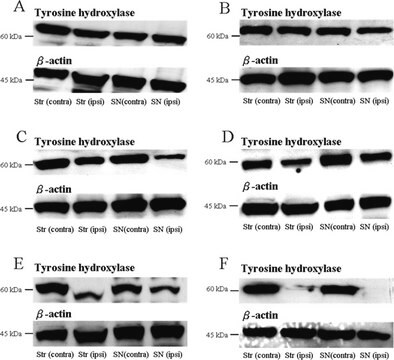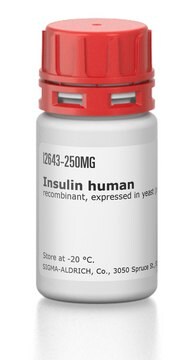MS0100
ProteoMass™ Guanidination Kit
For improving MALDI-MS sensitivity and peptide sequence coverage
About This Item
Prodotti consigliati
Nome Commerciale
ProteoMass™
applicazioni
cleaning products
cosmetics
flavors and fragrances
food and beverages
personal care
Compatibilità
for use with (Complex cell extracts, pure protein solution, 1D and 2D PAGE gels)
Applicazioni
Caratteristiche e vantaggi
- Identify more samples with greater accuracy and confidence
- Increase throughput and save time - only 35 minutes to use the kit vs. 2 hours using traditional methods
- Compatibility - compatible with 1D or 2D PAGE gel bands or spots, as well as complex cell extracts
Altre note
Note legali
Prodotti correlati
Avvertenze
Danger
Indicazioni di pericolo
Consigli di prudenza
Classi di pericolo
Aquatic Acute 1 - Aquatic Chronic 3 - Eye Dam. 1 - Skin Corr. 1A - STOT SE 3
Organi bersaglio
Respiratory system
Codice della classe di stoccaggio
8A - Combustible corrosive hazardous materials
Classe di pericolosità dell'acqua (WGK)
WGK 3
Punto d’infiammabilità (°F)
Not applicable
Punto d’infiammabilità (°C)
Not applicable
Certificati d'analisi (COA)
Cerca il Certificati d'analisi (COA) digitando il numero di lotto/batch corrispondente. I numeri di lotto o di batch sono stampati sull'etichetta dei prodotti dopo la parola ‘Lotto’ o ‘Batch’.
Possiedi già questo prodotto?
I documenti relativi ai prodotti acquistati recentemente sono disponibili nell’Archivio dei documenti.
Il team dei nostri ricercatori vanta grande esperienza in tutte le aree della ricerca quali Life Science, scienza dei materiali, sintesi chimica, cromatografia, discipline analitiche, ecc..
Contatta l'Assistenza Tecnica.








